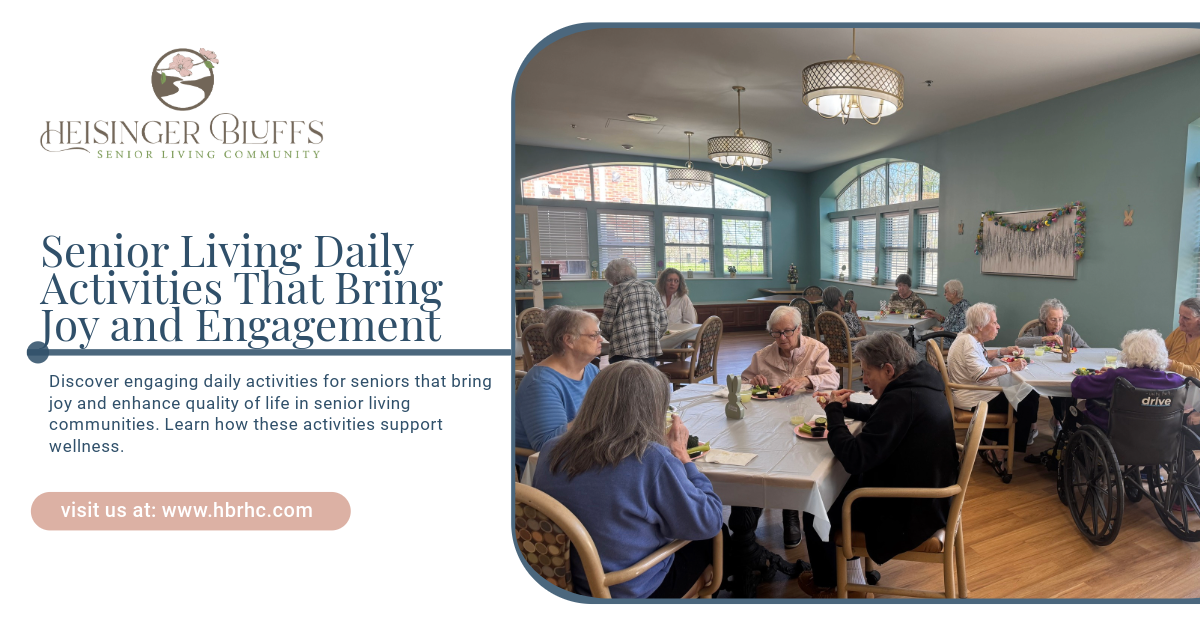Coping and Adjusting to Senior Living: The Emotional Journey

Moving into a senior living community is a significant life change, and it’s natural for this transition to bring up a range of emotions. The thought of leaving behind a long-term home, adjusting to a new routine, and adapting to a different social environment can feel overwhelming. It’s a journey that requires emotional adjustment, but it can also bring new opportunities for connection, growth, and peace of mind.
This post will explore the emotional journey of moving to senior living and offer strategies to cope with the change. Whether you’re moving into a community yourself or helping a loved one through the process, understanding the emotional aspects of this transition can help ease the adjustment.
Understanding the Emotional Impact of the Move
Before delving into ways to cope, it’s important to acknowledge the emotions that may arise during the transition. For many, this move may feel like a loss, not only of a familiar environment but also of a sense of independence. Common emotions include:
- Sadness: Leaving a home filled with memories can be emotionally painful.
- Fear: The unknown can trigger feelings of anxiety about what life will be like in a new environment.
- Loneliness: Adjusting to a new community, especially if you’re leaving behind friends and family, can lead to feelings of isolation.
- Relief: While many people feel sadness, some may also feel relief at the prospect of having support and care readily available.
Recognizing these emotions as a normal part of the process is essential to navigating the adjustment. It’s okay to feel a mix of emotions during this time.
Coping Strategies for the Emotional Transition
Adjusting to life in a senior living community is a gradual process. But with the right strategies, it’s possible to manage the emotional journey and embrace the changes. Here are some key coping strategies to help ease the transition:
1. Take Time to Process Emotions
It’s important to allow yourself the time and space to process the emotional aspects of the move. Don’t rush yourself through the adjustment period. It’s normal to grieve the loss of your old home, so take time to reflect and acknowledge your feelings. Journaling, talking to a trusted friend or family member, or seeking the support of a counselor can help in working through difficult emotions.
2. Stay Connected with Loved Ones
One of the biggest fears about moving to senior living is the sense of losing connection with loved ones. However, staying connected with family and friends is easier than ever with technology. Make use of video calls, phone calls, and even social media to maintain relationships. Many senior living communities also have programs designed to help residents stay engaged with their families.
3. Personalize Your New Space
Personalizing your new home within the senior living community can make a huge difference in your emotional well-being. Bring along cherished items such as family photos, favorite furniture, or meaningful keepsakes. Making your space feel familiar and comfortable helps to create a sense of ownership and stability.
Building New Relationships and Community Connections
Creating new relationships can be an essential part of settling into a senior living community. While it may seem intimidating at first, it’s a great opportunity to meet new people and form connections. Here’s how you can get started:
1. Engage in Community Activities
Many senior living communities offer a wide range of activities and programs designed to bring people together. From arts and crafts to fitness classes or social events, these activities are a great way to meet neighbors and start building friendships. Take part in group outings, attend the community’s events, or simply visit the common areas to socialize.
2. Find Common Interests
Finding people with shared interests or hobbies can help ease the transition. If you enjoy a particular activity, such as reading, gardening, or playing cards, try to find others who share that passion. Having something in common makes it easier to start conversations and forge new connections.
3. Seek Support from the Staff
Many senior living communities have professional staff members trained to support residents in their adjustment. If you’re feeling uncertain or lonely, don’t hesitate to reach out to a staff member for guidance. They can provide emotional support and connect you to resources designed to help with the transition.
Embracing the Benefits of Senior Living
While the move to senior living may come with challenges, there are numerous benefits that can help you thrive in this new chapter of life. Focusing on these advantages can help shift your mindset toward the positive aspects of the transition.
1. Access to Care and Support
One of the greatest benefits of senior living is having easy access to healthcare and support services. Many communities offer 24/7 nursing care, physical therapy, and wellness programs, allowing residents to feel secure in knowing that their health and well-being are being prioritized.
2. Reduced Household Responsibilities
Another major benefit of senior living is the reduction in household responsibilities. With maintenance, cooking, and housekeeping often taken care of, residents can focus on enjoying their time rather than managing a home. This can reduce stress and free up time for other enjoyable activities.
3. Opportunities for Learning and Personal Growth
Senior living communities often offer opportunities for lifelong learning. Whether it’s through educational workshops, art classes, or guest speakers, these programs allow residents to continue exploring new interests and hobbies. The sense of personal growth can significantly contribute to a positive emotional experience.
Managing Your Mental Health During the Transition
Mental health is just as important as physical health when adjusting to life in a senior living community. Here are some ways to prioritize your mental well-being:
1. Practice Self-Compassion
Be kind to yourself during this transition. Moving to senior living is a big step, and it’s okay to feel a range of emotions. Practice self-compassion by acknowledging that it’s normal to experience difficulty and that you are doing your best to adjust.
2. Focus on Mindfulness and Relaxation
Mindfulness practices such as meditation, deep breathing exercises, or yoga can be incredibly helpful in managing anxiety and stress. These practices help you stay grounded in the present moment and can reduce the feelings of uncertainty that often accompany major life changes.
3. Consider Professional Help if Needed
If the emotional strain of the move becomes overwhelming, it may be helpful to seek professional help from a therapist or counselor. Many senior living communities offer on-site therapy or can connect you to local mental health professionals who specialize in senior care.
Looking Ahead: A New Chapter
The emotional journey of moving to senior living isn’t always easy, but it’s important to remember that this transition is just one chapter in a much larger story. Over time, feelings of loss and uncertainty will give way to acceptance and even joy as you adapt to your new environment. Embrace the opportunities for connection, care, and personal growth that senior living offers, and remember that this is a chance to start fresh in a new and supportive community.
Conclusion
Moving to senior living is a big change, but it’s also an opportunity for new beginnings. It’s essential to acknowledge and process your emotions during this time, and with the right coping strategies, you can adjust to your new lifestyle with confidence. Remember, every step of the journey is a chance to discover new relationships, personal growth, and a sense of peace.
If you’re considering senior living for yourself or a loved one, it’s important to choose a community that offers not just excellent care but also a supportive and engaging environment. At Heisinger Bluffs, we are committed to making the transition to senior living as smooth as possible. Our dedicated staff and wide range of amenities are designed to help residents embrace their new home with ease.
Frequently Asked Questions
How long does it take to adjust to life in a senior living community?
The adjustment period varies for each individual. It may take a few weeks or even a few months to fully settle in. Being patient with yourself and seeking support from staff and loved ones can help ease the process.
Can I keep my pets in a senior living community?
Many senior living communities are pet-friendly, allowing residents to bring along their furry companions. Be sure to check with the specific community about their pet policy.
What types of activities are available in senior living communities?
Senior living communities often offer a wide range of activities, including fitness classes, arts and crafts, social events, outings, and educational programs. These activities are designed to engage residents and foster a sense of community.
Resources:
- https://www.agingcare.com/articles/moving-elderly-parents-from-home-to-senior-housing-136651.htm
- https://pmc.ncbi.nlm.nih.gov/articles/PMC4542647/
- https://pmc.ncbi.nlm.nih.gov/articles/PMC6938254/
- https://www.ncoa.org/page/healthy-aging-programs/
- https://mindworks.org/blog/best-meditation-techniques-seniors/











